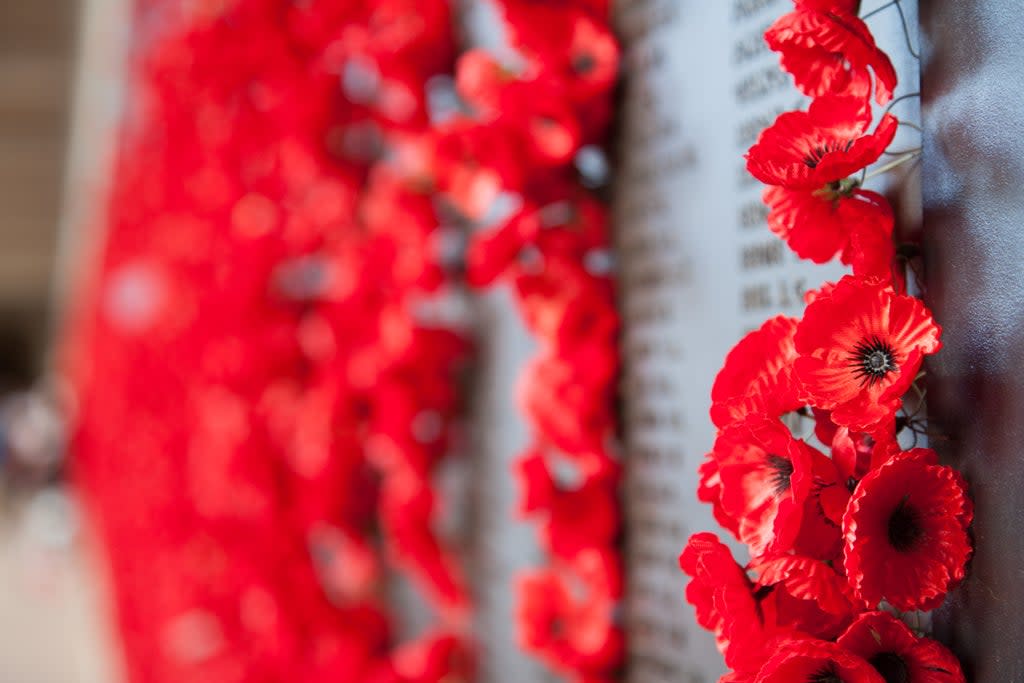Remembrance Day 2021: When is it and what do the red poppies symbolise?

As November begins, bright red poppies will start appearing people’s clothing, in shops, in train stations, on cars, and more, as the UK observes Remembrance Day.
Throughout the month, Britain honours the lives that were lost in service of the country and thanks the Armed Forces of Britain and the Commonwealth.
Tributes are also paid to the families of the Armed Forces community and the emergency services, and the lives of innocent civilians that were lost in conflict and acts of terrorism are also acknowledged.
What date does Remembrance Day fall on this year and what do the red poppies mean?
When is Remembrance Day 2021?
Remembrance Day, also known as Armistice Day, falls on 11 November, as it does every year.
The occasion is also marked on the second Sunday of November, known as Remembrance Sunday, with a minute’s silence at 11am.
This year, Remembrance Sunday falls on 14 November. The National Service of Remembrance is held each year on this day at the Cenotaph on Whitehall, London, commemorating “the contribution of British and Commonwealth military and civilian servicemen and women in the two World Wars and later conflicts”.
How can I watch The National Service of Remembrance?
The National Service of Remembrance, which sees a parade of veterans march through London and the Queen paying tribute alongside members of the Cabinet, opposition party leaders, former prime ministers, the Mayor of London and other ministers, is usually open to the public and televised.
But last year, the service was closed to the public due to the coronavirus pandemic, and people were asked to mark the day at home instead of gathering at the Cenotaph.
The Royal British Legion (RBL) is “working towards business as usual” this year, it has said. Typically, around 10,000 people gather at the Cenotaph.
The RBL says on its website: “Should government guidelines necessitate, RBL may need to reduce the number of spaces in the Parade at late notice. Any changes to this event will be communicated via our website.”
What does the red poppy symbolise?
The red poppies are worn as a show of support for the Armed Forces community and is a symbol of “both Remembrance and hope for a peaceful future”, says the RBL.
During World War 1, parts of the UK’s countryside were destroyed amid bombing and fighting. But bright red poppies flourished in the muddy fields and inspired a poem by Canadian doctor, Lieutenant Colonel John McCrae.
McCrae’s now-famous poem, “In Flanders Fields”, then inspired American academic Moina Michael to adopt the flower in memory of those who were lost in the war.
Following a campaign to have the flower adopted as an official symbol of Remembrance across the US, Michael worked with others who wanted to do the same in Canada, Australia and the UK.
Today, the red poppies are worn across the country in tribute to the Armed Forces and the RBL’s Poppy Appeal raises funds to help veterans with housing and jobs. Around 40,000 volunteers now distribute 40 million poppies each year.
Where can I get a poppy?
The RBL is the official seller of poppies for Remembrance Day and you can buy a paper poppy for £2, an enamel poppy for £3, or a clip-on poppy for £3.99.
Other poppy-themed items are also available, including a wreath at £17.99 and a fabric face mask decorated with poppies, which is now on sale for £4.99.
All items can be purchased online at the RBL’s Poppy Shop, or you can visit your closest RBL shop to buy them in person. Poppy Appeal sellers can also be found in most places closer to Remembrance Day.
All money spent on poppies goes to The Royal British Legion.
Read More
Dog owners handing in unwanted lockdown pets as strays, shelters say
How jumpsuit trends have changed over the decades
Winter is coming: How to store seasonal vegetables in the colder months
Former Victoria’s Secret model says she used diet pills and hormones to lose weight
We are in the ‘worst’ of the chip crisis and it will last until 2023, Intel boss says

